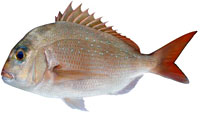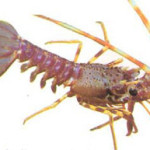
Pagrus auratus
Strictly, or scientifically speaking, the pink snapper (Pagus auratus) is not actually a “snapper” at all! The snappers are a large and diverse group of robust-bodied, carnivorous fishes and belong to the family Lutjanidae. Like many other Australian species, the pink snapper inherited its name from the northern species it most closely resembles, but is in fact a member of the family Sparidae, which are sea bream or porgies.
The pink snapper is a very attractive fish, silvery in colour, with a pink to brown upper body. The sides are sprinkled with bright blue spots that are more prominent in juveniles. The top, tail and side fins are also pink, while the bottom fins range in colour from pale-pink to creamy-white.
Snapper have been known to live 30 years – a ripe old age for fish. As they mature, they develop a prominent hump on the top of the head. The hump develops in both sexes but is more prominent in males Snappers are among the most popular food fishes in Australia, and this popularity has led to a number of common names, including Cockney, Cockney Bream, Nobbler, Old Man, Pink Snapper of course, Pinkie, Pinky, Queen, Red Bream, Rugger, Schnapper, Tamure and White Snapper. Young fish are known as Squires and indeed the generally accepted common name for the species is Squirefish. Mature adults are locally called Old Man Snappers.
Pink snapper are a reef fish and live on the continental shelf at depths down to 200m, and in large bays. Juvenile fish are sometimes found in small sandy-bottomed bays and the lower reaches of estuaries.
They grow to 130cm in length and can weigh up to 20kg, but given their popularity, you are more likely to see specimens at around half of these sizes. The legal minimum size for fishing is 41cm.
In Australia the fish can be found in marine waters around the southern half of the country from southern Queensland to the central coast of Western Australia.








Social Profiles